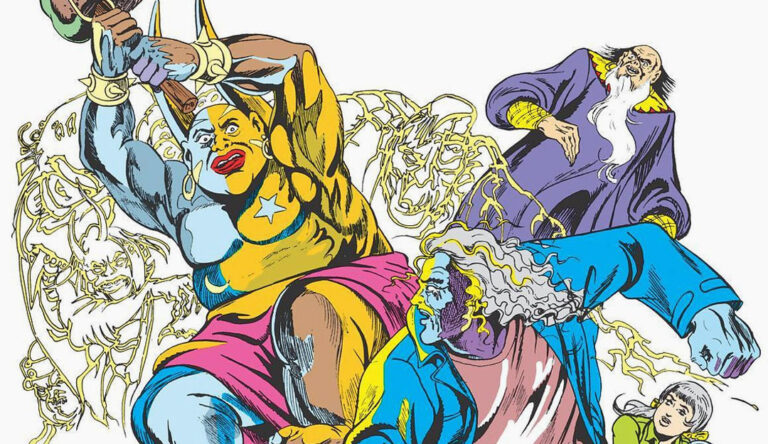When the means of entertainment were limited, publishing houses like Raj Comics, Diamond Comics, and Manoj Comics used to be our best friends. It was from these corridors that a hero emerged who was different from others — neither was he physically very strong, nor did he have any sophisticated weapons. He was a spirit, a phantom, who fought against injustice. His name was — Pret Uncle.
Today, I have in my hands the super special issue of Pret Uncle, “Phantom of Thodanga”, which was priced at 20 rupees at that time. This comic is not just a story but a living testament to the amazing creativity, art, and storytelling style of that period. This comic, based on the story by Hanif Azhar and illustrated by Vinod Kumar, takes us to a world where a unique confluence of Tantra-Mantra, science, greed, and bravery can be seen. So let’s go on this exciting journey and delve deeper into the world of “Phantom of Thodanga”.
Plot: A multifaceted and tangled saga
The plot of “Phantom of Thodanga” does not follow any straight line; rather, it weaves together many small and big stories that paint a huge and frightening picture at the end.
The story begins with a dialogue between Elephanta, a mysterious occultist, and Thodanga, a powerful, horned demon. Elephanta partially frees Thodanga from a magical prison with his tantric powers. Thodanga, who was unable to move, expresses his gratitude to Elephanta. Their dialogue makes it clear that both of them have come together for some big and evil purpose. This beginning immediately creates curiosity in the reader’s mind as to who these two are and what their purpose is.
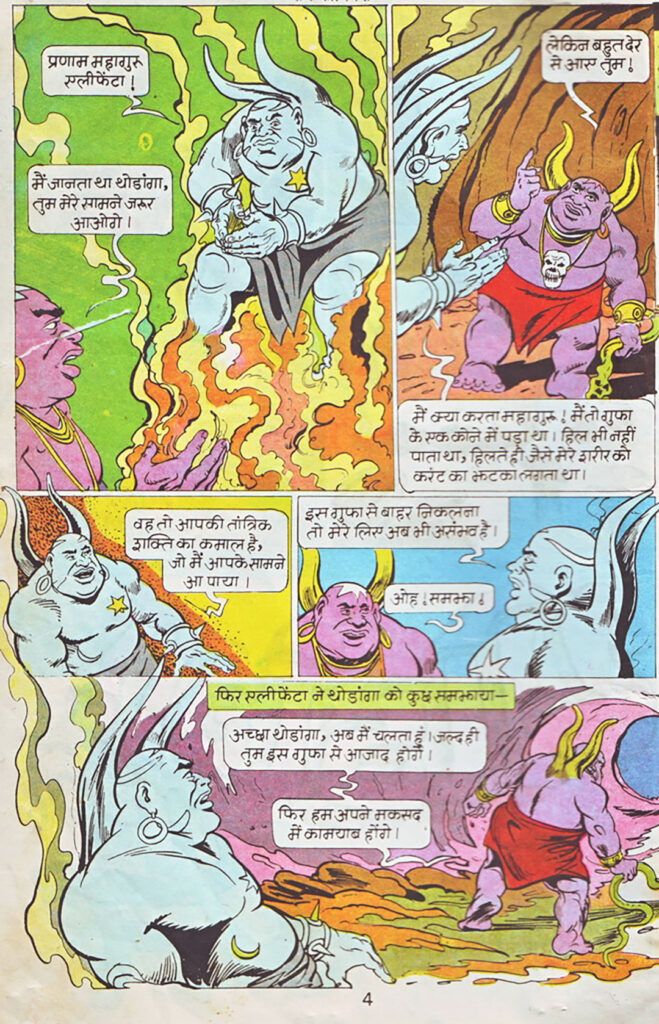
Soon after, the story takes a turn towards Blue Heaven, a fantastic club in Africa. Here, five criminals named Lochi, Don, Bosky, Kat, and Bhainsi are listening very carefully to the words of an old man. The old man lures them with the “treasure of Thodanga” — a treasure that can outshine even Kuber’s treasure. To prove his point, he shows them a precious diamond. The greedy criminals pretend to give the old man five lakh rupees to get the map of that treasure, then take him to a deserted street and kill him. They think they have easily found their way to billions in wealth but are unaware that it was a trap set for them.
The third and most important part of the story takes place in Rajnagar, India. A plane mysteriously stops in the air at Rajnagar International Airport. Soon, a skeleton-like figure, who describes itself as a “phantom robber”, appears and demands a ransom of twenty lakh rupees. This incident becomes a new and terrible challenge for the government and the public, because it is not an ordinary criminal but a transcendental force. The bullets are ineffective on them. Here, we get the first glimpse of the massive conspiracy led by the main villain of the story.
To deal with the terror of these “phantom robbers”, our hero Pret Uncle arrives. Pret Uncle, himself a spirit, has the ability to fight these evil spirits. In the story, Pret Uncle encounters not only these ghost robbers but also other terrible creatures created by their master, such as a giant spider-like monster.
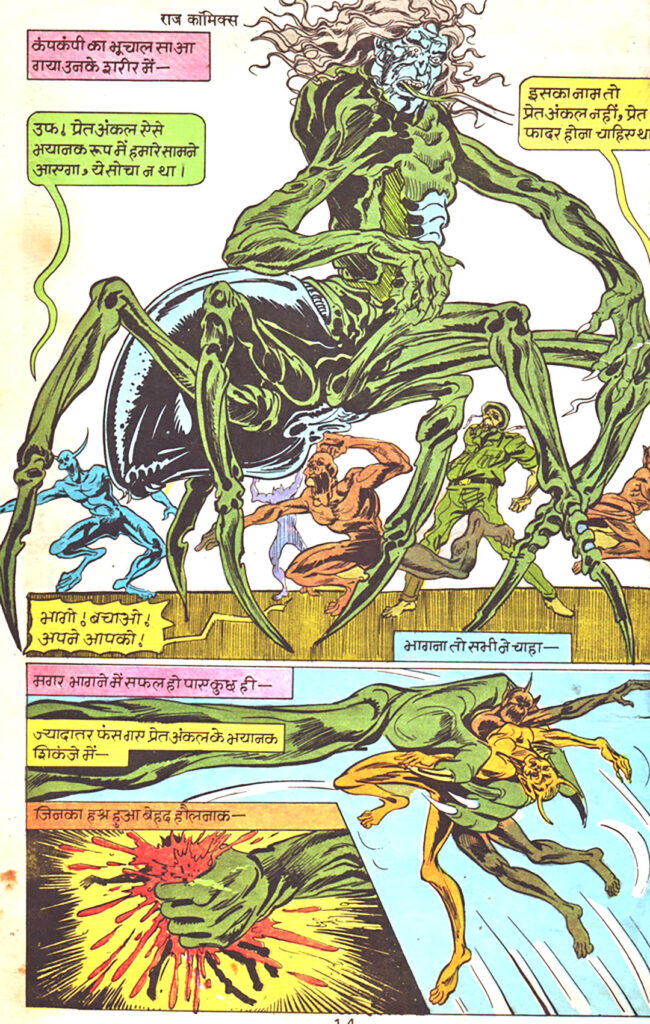
Meanwhile, in Africa, the five criminals chase the map and reach the cave of Thodanga. When they enter the cave in the hope of finding treasure, they encounter not the treasure but Thodanga himself. Thodanga attacks them and reveals that the story of the old man and the treasure — everything was a play created by his master, Elephanta, so that he (Thodanga) could receive human sacrifices to regain his powers.
All the threads join together in the climax of the story. It is revealed that the creator of the “phantom robbers” and other monsters is none other than the notorious scientist Doctor Devil, who plans to rule the world together with the occultist Elephanta. Doctor Devil controls the spirits by resorting to science, while Elephanta exercises his tantric powers. Their biggest weapon is Thodanga, whom they send to wreak havoc in the world.
The final confrontation takes place on the streets of Rajnagar, where Phantom Uncle encounters both Thodanga and Doctor Devil. This battle is a classic clash of good and evil, where on one side there are the noble powers of Phantom Uncle, and on the other side, there are the satanic forces formed by the nexus of science and Tantra.
Characterization: Heroes, Villains, and Pieces
Phantom Uncle: Phantom Uncle, the hero of this story, is a unique superhero. He is the soul of an older man who wears a special trench coat. His powers are not physical but spiritual. He can go through walls, throw energy rays, and communicate with other spirits. His character is calm, serious, and just. He fights not for revenge but to protect the innocent. The Phantom of Thodanga tests both his heroism and intelligence.
Thodanga: Being the title character, Thodanga is a memorable figure. He is not only a ruthless demon but also a complete (tragic) villain. He was originally a powerful warrior turned into a demon by a curse or spell and is now a puppet in the hands of Elephanta and Doctor Devil. His giant body, great horns, and boundless power make him a sinister rival, but the reader may feel disgust as well as a little sympathy for him at the end of the story.
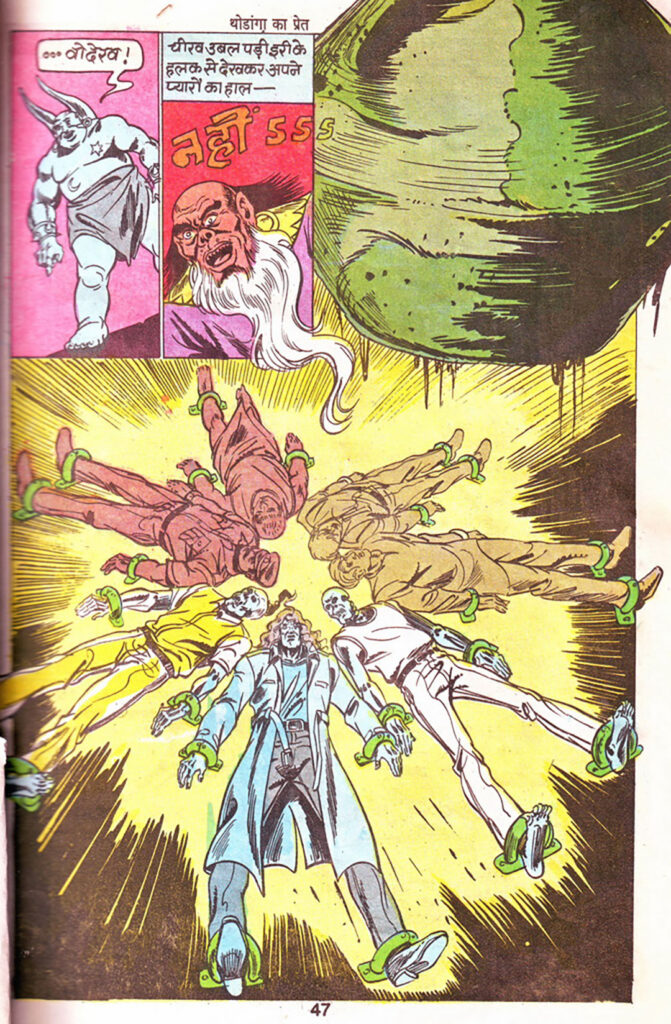
Villains (Doctor Devil and Elephanta): This comic gives us not one but two main villains, who create a deadly combination. Elephanta symbolizes ancient occultism and dark powers, while Doctor Devil symbolizes the misuse of modern science. Inventions such as Doctor Devil’s “Anti-Ghost Powder” show that he understands the powers of Phantom Uncle and is capable of countering them. The pair give an interesting dimension to the story, where superstition and science combine to cause destruction.
Five criminals: Lochi, Don, and their accomplices play the “pawn” in the story. They are symbols of greed. Their story gives a moral lesson that greed and crime always end badly. They act as an important catalyst in moving the story forward.
Art and Portraiture: 90’s Magic
Vinod Kumar’s artwork is the soul of this comic. There is a special kind of dynamism and energy in his art. Action scenes, such as the fight between Phantom Uncle and Thodanga, are portrayed very impressively. The expressions on the characters’ faces — be it fear, anger, or surprise — emerge very clearly.
Thodanga’s design is particularly laudable. Just by looking at him, one becomes aware of his brute strength and demonic tendencies. Similarly, the skeleton-like form of the “phantom robbers” makes them terrifying.
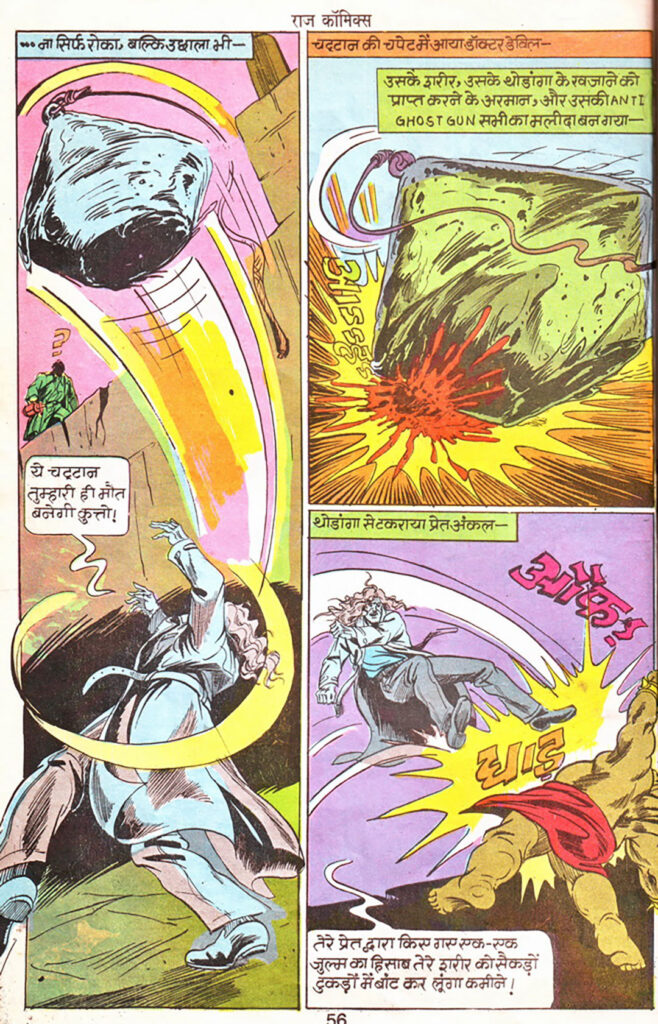
The color combination done by Sunil Pandey and Richie is the hallmark of comics of that era. The use of bright and vibrant colors adds a different life to the story. The creative use of colors to show energy rays and magical effects is worth seeing. Every page feels like an artwork that completely immerses the reader in the story.
Conclusion: An Unforgettable Experience
The Phantom of Thodanga is not just a comic but a time machine that takes us back in time. It represents the glorious era of Raj Comics when there was depth in stories, passion in art, and life in characters. This comic is equally relevant and entertaining in today’s digital age.
It teaches us that to become a hero, not only physical strength but also courage, intelligence, and a sense of justice are necessary. It depicts the dangerous nexus of science and superstition and warns us of the evil consequences of greed.
Overall, Phantom of Thodanga is a priceless treasure for Phantom Uncle fans and lovers of Indian comics. This is a story that will keep you engaged till the end and will remain in your mind even after it is over. If you have the opportunity to read this comic, don’t let it slip away. It is a great example of the creativity of Indian comics that should be read and appreciated again and again.
